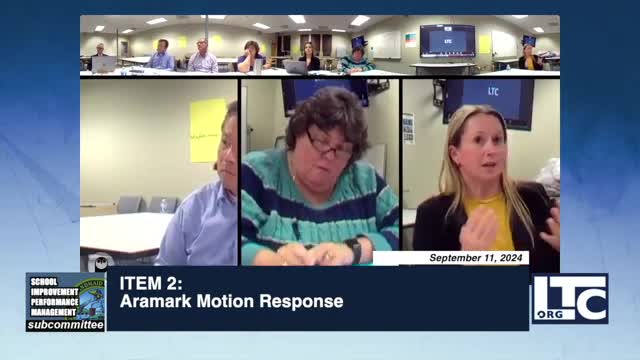Schools Revamp Lunch Programs to Boost Student Nutrition
September 15, 2024 | Lowell Public Schools, School Boards, Massachusetts
This article was created by AI summarizing key points discussed. AI makes mistakes, so for full details and context, please refer to the video of the full meeting. Please report any errors so we can fix them. Report an error »

In a recent government meeting focused on school food services, officials discussed the ongoing efforts to enhance the nutritional quality of meals provided to students. The conversation highlighted the collaboration with major food manufacturers, such as General Mills and Tyson, to ensure that school meals meet stringent U.S. dietary guidelines. As these regulations become increasingly strict, manufacturers are adapting their product formulations to comply.
A key point raised was the importance of feedback mechanisms for students and families regarding meal satisfaction. Despite efforts to gather input through surveys and QR codes placed in schools, officials noted a lack of substantial responses. The \"Be Heard\" feedback system remains active, allowing families to voice concerns directly to school administrators. However, the response rate has been sporadic, prompting discussions on improving outreach to parents and students.
The meeting also addressed the challenges of staffing in school kitchens, which can affect menu variety and meal quality. Officials explained that a master roster based on meals served helps manage staffing needs, but filling positions during callouts remains a significant hurdle. This staffing issue can lead to variations in daily menus, as the number of meals prepared is adjusted based on past student preferences.
To enhance meal appeal, schools are introducing customizable options, such as topping bars, allowing students to personalize their meals. This initiative aims to increase food consumption among students, ensuring they return to class ready to learn. The officials emphasized the importance of presentation and training for kitchen staff to improve the overall dining experience.
Concerns were also raised about the quality of food deliveries from vendors. Officials assured that rigorous receiving protocols are in place to monitor the quality of food items, with staff trained to reject subpar deliveries. The meeting concluded with a commitment to continue refining food service operations to minimize waste and enhance student satisfaction.
A key point raised was the importance of feedback mechanisms for students and families regarding meal satisfaction. Despite efforts to gather input through surveys and QR codes placed in schools, officials noted a lack of substantial responses. The \"Be Heard\" feedback system remains active, allowing families to voice concerns directly to school administrators. However, the response rate has been sporadic, prompting discussions on improving outreach to parents and students.
The meeting also addressed the challenges of staffing in school kitchens, which can affect menu variety and meal quality. Officials explained that a master roster based on meals served helps manage staffing needs, but filling positions during callouts remains a significant hurdle. This staffing issue can lead to variations in daily menus, as the number of meals prepared is adjusted based on past student preferences.
To enhance meal appeal, schools are introducing customizable options, such as topping bars, allowing students to personalize their meals. This initiative aims to increase food consumption among students, ensuring they return to class ready to learn. The officials emphasized the importance of presentation and training for kitchen staff to improve the overall dining experience.
Concerns were also raised about the quality of food deliveries from vendors. Officials assured that rigorous receiving protocols are in place to monitor the quality of food items, with staff trained to reject subpar deliveries. The meeting concluded with a commitment to continue refining food service operations to minimize waste and enhance student satisfaction.
View full meeting
This article is based on a recent meeting—watch the full video and explore the complete transcript for deeper insights into the discussion.
View full meeting
